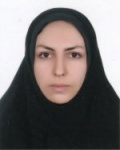| نویسندگان | Guoxi Liang,فاطمه پناهی,Ali Najah Ahmed,محمد احترام,Shahab S. Band,Ahmed elshafie |
|---|
| نشریه | J CLEAN PROD |
|---|
| ضریب تاثیر (IF) | ثبت نشده |
|---|
| نوع مقاله | Full Paper |
|---|
| تاریخ انتشار | 2021-06-28 |
|---|
| رتبه نشریه | علمی - پژوهشی |
|---|
| نوع نشریه | الکترونیکی |
|---|
| کشور محل چاپ | ایران |
|---|
| نمایه نشریه | SCOPUS ,JCR |
|---|
چکیده مقاله
Solid Waste (SW) is one of the critical challenges of urban life. These SWs are considered environmental
7 pollutants that are a threat to ecology and human health. Predicting SW generation is an essential topic for
8 scholars to better manage SWs. This study investigates the application of optimised ANN models for
9 predicting monthly SW generation in Iran using datasets about seven Iranian megacities. The Archimedes
10 Optimisation Algorithm (AOA), Sine Cosine Algorithm (SCA), Particle Swarm Optimisation (PSO)
11 technique, and Genetic Algorithms (GA) were used for training the ANN model. The enhanced gamma test
12 was used to determine the best input combination. AOA and the gamma test were used concurrently to
13 reduce the time needed for choosing the best input combination. Gross domestic product (GDP), population,
14 household size, and numbers of months were the best input combination set. This best input combination
15 was then inputted into the hybrid and standalone ANN models for predicting monthly SW generation.
16 During the final phase, the outputs of ANN-AOA, ANN-SCA, ANN-PSO, ANN-GA, and ANN models
17 were used as inputs for an inclusive multiple model (IMM) in order to enhance model accuracy. The IMM
18 model reduced the training phase root mean square error (RMSE) of ANN-AOA, ANN-SCA, ANN-PSO,
19 ANN-GA, and ANN models by 55%, 59%, 68%, 72%, and 73%, respectively. Although ANN-AOA
provided higher R2
20 and lower RMSE values than ANN-PSO, ANN-SCA, ANN-GA and ANN models, the
21 IMM model outperformed ANN-AOA, considering that it integrates the advantages of all models used in the
22 current study. The current study also used the fuzzy reasoning concept for modifying ANN model structures.
23 The results indicated that such ANN models' time requirement was lower than those without fuzzy reasoning
24 concept. The general results of the current study indicate that the ANN-AOA and the fuzzy-reasoning based
25 Inclusive Multiple Model have a high ability for predicting different target variables.
